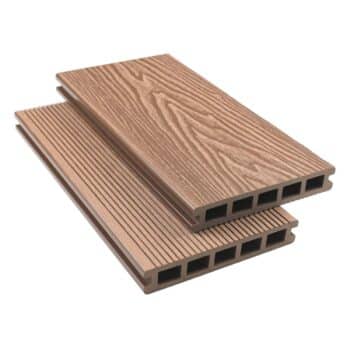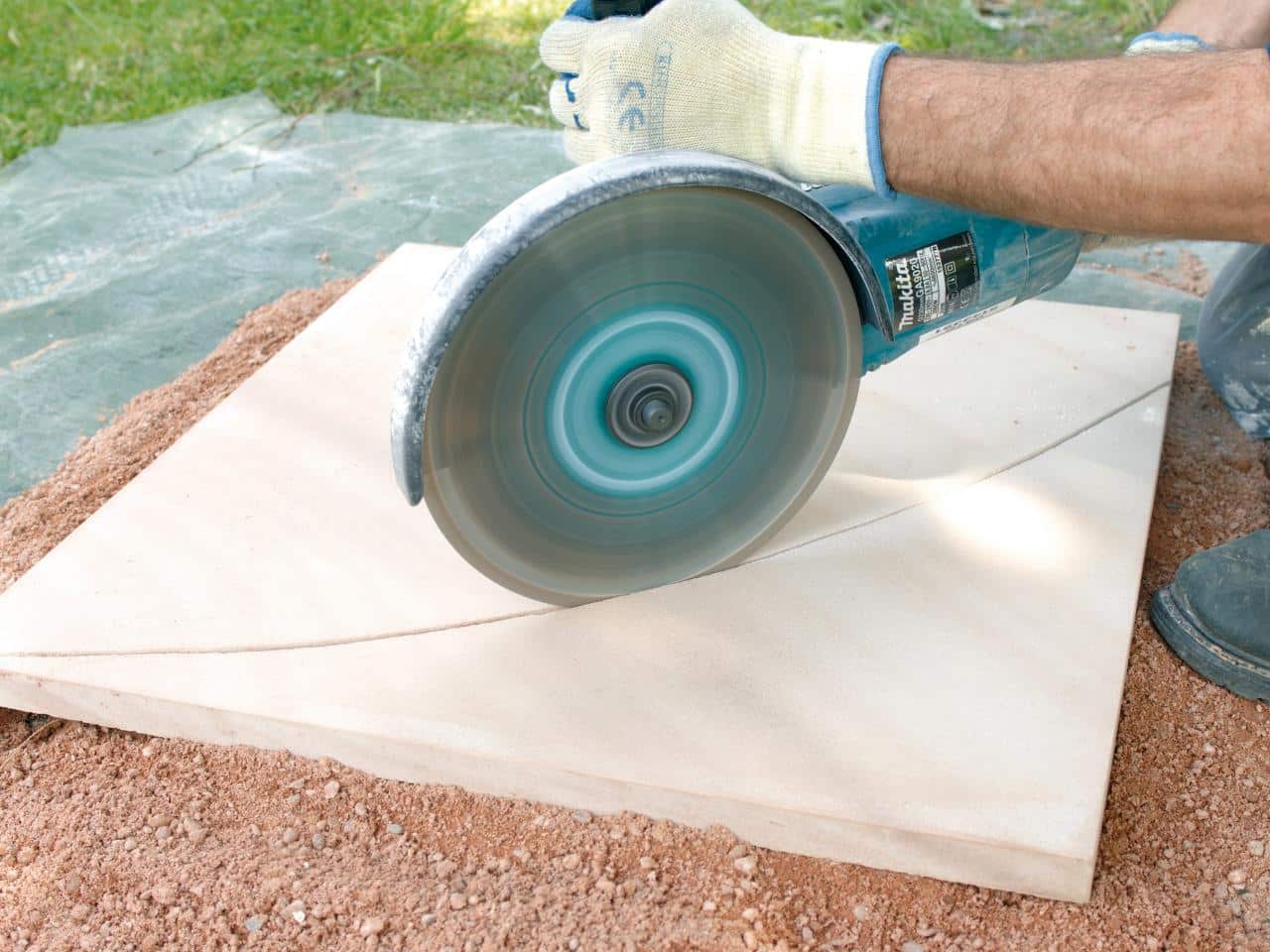You will almost always need to make cuts to some of your slabs when laying a patio.
Cutting slabs to fit around drain covers, steps or simply fitting the pavers to the edge of your available area are just a few examples of why you would need to, and we’ll talk you through the two most widely used methods used for cutting paving slabs so you can get the best results!
How To Handcut Paving Slabs With A Hammer & Chisel
The original method of cutting slabs is to use a simple hammer and chisel.
This is best suited to Sandstone or Slate and is often recommended for Riven Paving or any slabs with a hand-cut edge. This will help to keep the look of the slabs consistent by matching your cuts with the existing hand-cut edges.
You will need:
- Tape Measure
- Pencil
- Hammer
- Breaker Chisel
- Rubber Mallet
1. Start by measuring the space you need to fill with your slab, then mark out the measurements onto the slab to use as a guide when cutting.
2. Using the hammer and chisel, cut a shallow channel into the slab down the markings around 1-2mm deep.
3. Now that the slab is scored, split the paver by striking the portion you want to cut off with the rubber mallet. Score the slab a little deeper if the paver doesn’t split easily.
4. Tidy up any uneven edges using the hammer and chisel if necessary.
5. The slab is now ready to be laid.

How To Cut Paving Slabs With A Power Saw
The most common method to cut paving slabs is a circular power saw. This is best for Porcelain, Granite and Sawn Sandstone for a smooth cut with a straight edge and will keep your cuts consistent with the rest of your slabs.
You can use either a bench saw or a handheld circular saw for this and a diamond-tipped blade is always recommended for cutting stone. Diamond blades offer a more consistent depth of cut whereas a regular abrasive blade will wear down very quickly which will affect the quality of the cuts. Always be sure to double-check that the blade you have is suitable for the type of stone that you will be cutting before you start.
You should always wear protective goggles, a dust mask and use a dust-suppression system to protect yourself and others around you. A dust suppression system will wash away any dust before it forms a cloud by spraying a constant flow of water at the point of the cut.
Dust clouds are dangerous to the eyes and when inhaled, so dry cutting should be avoided at all costs. All the necessary tools and safety equipment will be available for hire from any regular tool hire company. If in doubt, your local tool hire company will be able to advise on the tools and safety equipment you will need.
You will need:
- Tape Measure
- Pencil
- Steel / Aluminium Ruler
- Workbench
- C-Clamps
- Power Saw
- Diamond-tipped Blade
- Rubber Mallet
1. Start by measuring the space you need to fill with your slab, then mark out the measurements onto the slab to use as a guide when cutting.
2. Secure your slab to the workbench using C-clamps so that the stone cannot move.
3. Use the ruler as a guide for the saw and start to cut the paving slabs down the pencil markings. Once you have a cut of roughly 1cm deep, turn the slab over and repeat the process.
4. Once you have a 1cm deep cut on both sides, use a rubber mallet to separate the stone. Depending on the thickness of the slabs, you may not need to use a mallet at all. If you are using thicker slabs, you may need to continue and make deeper cuts.
5. The slab is now ready to be laid.

Tips For Success
When measuring for your cuts, be sure to double-check that all of your measurements are accurate before you start and remember to account for joint widths. Being fully prepared and double-checking your measurements will always set you up for the best results and avoid any excessive, avoidable waste.
Ordering an additional 10-15% is always advised to cover you for waste during installation. Off-cuts will come from the total m² coverage that you have ordered and being prepared for this by allowing yourself an extra few slabs will prevent you from being left short of materials.
Overall, cutting paving slabs is a simple process and if you are unsure of anything, always consult a professional before going ahead.
For more advice on laying your paving, see our Installation Guide.













